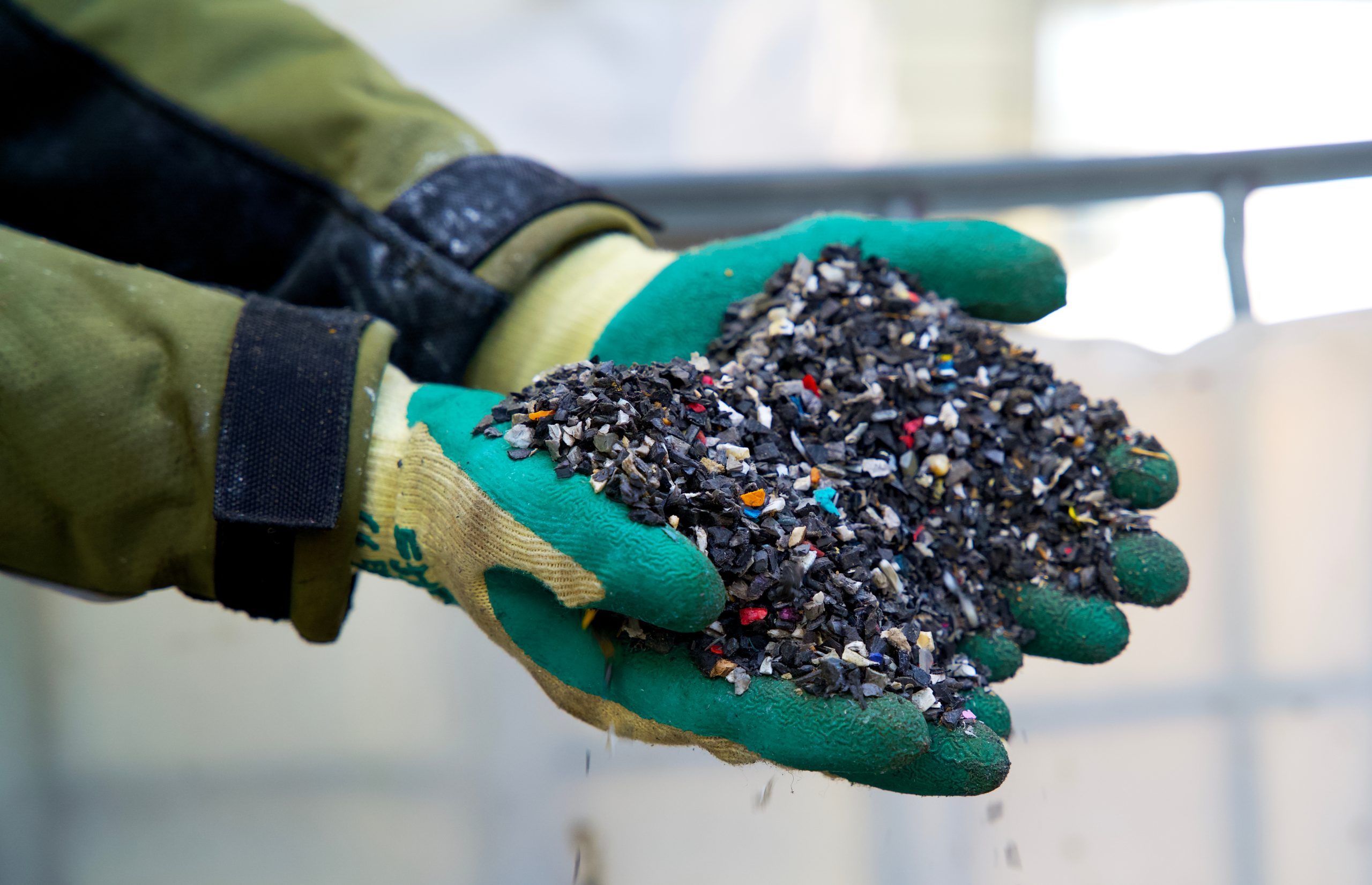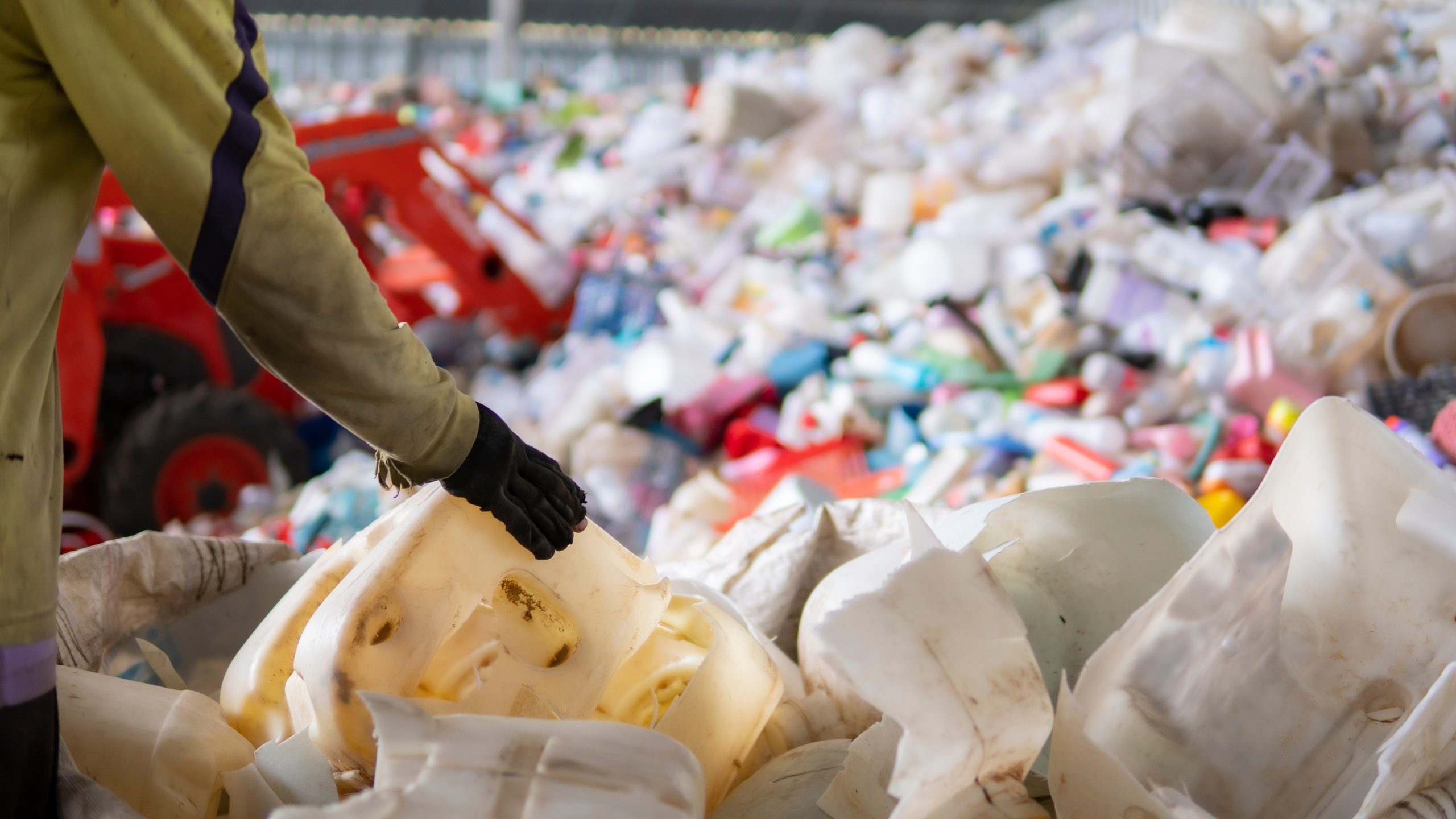Characterization Considerations when Sourcing PCR
Julienne Regele | Morgan Ulrich
May 8, 2023
Against the backdrop of a plastic waste crisis, the global demand for plastic is set to quadruple by 2060.1 This has driven a shift toward sustainability and away from linear use models of plastic production. Post-consumer resin (PCR) has emerged as a key player in circular economy initiatives, though ensuring the quality and performance of PCR requires several characterization considerations.
This article explores the intricacies of PCR, challenges in processing, and techniques to verify its suitability for various applications.

Understanding PCR
PCR represents a group of plastics that have fulfilled their intended purpose and undergone a process of collection, cleaning, and re-pelletization for reuse. Reincorporating PCR into new products and packaging is crucial for circularity. By closing the loop of plastic consumption, the industry is able to reduce the demand for virgin resources and minimize the environmental impact caused by pollution and extracting natural resources.
Similar though distinct materials include post-industrial resin (PIR) and rework. The former consists of resins that have undergone conversion into a product deemed either out-of-specification or unsalable and, therefore, has never reached the end customer or consumer. Rework relates to waste generated within a manufacturing process that is subsequently reused within the same process instead of being sold to another manufacturer.
Material Characterization Considerations
Material Purity
In contrast to virgin resins, PCR feedstocks exhibit greater complexity and substantial variability due to their diverse origin. Despite advancements in sorting technology, this diverse origin can present significant challenges for processing engineers, such as the risk of contamination.

Differential scanning calorimetry (DSC) can play a role in testing the purity of PCR by scanning for unidentified peaks within the material. These peaks can be compared to reference polymers, enabling the determination of the composition and purity of the PCR sample. This method facilitates the detection of contaminants or impurities, supporting batch-to-batch quality control efforts and ensuring the integrity of the recycled material.2
Material Behavior
As mentioned above, PCR obtained from various sources can exhibit heterogeneity. This can extend beyond impurities to variations in molecular weight and molecular weight distribution, leading to inconsistencies in crystallinity, crystal melting behavior, and resin melt viscosity across different batches.2
DSC
DSC enables precise assessments of PCRs’ crystallinity and crystal melts, which is necessary information for determining the appropriate processing temperature and cooling rates during manufacturing processes such as extrusion or injection molding.
By reporting on glass transition temperature (Tg), DSC provides essential data for understanding the material’s mechanical and thermal behavior during processing and in the final product. By correlating crystallinity data from DSC with Tg, manufacturers can optimize processing parameters to ensure efficient production and the desired material properties in PCR-based products. Additionally, Waters | TA Instruments’ DSC has the capability to implement Guided Methods, which walks new users through experiments like this with step by step instructions.
For those handling multiple samples, TA Instruments’ Discovery X3 DSC is ideal. This model incorporates a multi-sample cell capable of providing high-quality heat flow data for three samples concurrently.2,3
Rheometry
Rotational rheometry can be used to obtain information on how the molecular structure of PCR feedstocks impacts processing characteristics. Through measuring melt viscosity over time and temperature, rheological analysis facilitates the evaluation of thermal stability at processing temperatures and the optimization of processing conditions.2
The ARES-G2 and Discovery Hybrid Rheometers (DHR) from TA Instruments offer advanced capabilities for assessing the rheology of PCR polymers. The ARES-G2 provides unparalleled data accuracy through separate motor and transducer technology (SMT) and precise temperature control, optimizing material processability and defining critical quality attributes (CQAs).
The DHR, on the other hand, offers unmatched performance, ease of use, and versatility.Regardless of the desired stress, shearing or oscillating force, or deformation, the DHR is a keystone instrument for top laboratories worldwide. With intuitive designs and an integrated Dynamic Mechanical Analysis (DMA) mode, these rheometers support advancements in materials science and product development.4,5
Material Performance
The variety of plastics present in PCR poses significant challenges for secondhand processing in value-added applications. Variety introduces incompatibility of blends, leading to undesirable mechanical properties and impacting the rheology and dynamics of the plastic. These factors are crucial in determining the material’s viability for use in manufacturing processes and its suitability for specific applications. To enhance compatibility and stabilize the morphology of PCR, compatibilizers like block co-polymers, carbon nanotubes, and silica nanoparticles are added.6
Throughout their lifespan and reprocessing cycles, recycled plastics also experience degradation, characterized by a reduction in molecular length.7 Accordingly, there is typically a trade-off that needs to be assessed when incorporating recycled content into virgin plastics.
Dynamic Mechanical Analysis (DMA) proves highly effective in evaluating the thermal and mechanical attributes of solid polymer samples. This technique facilitates the characterization of a material’s viscoelastic properties, including storage modulus, loss modulus, and tan δ, aiding in evaluating the ultimate performance characteristics of solid products and their correlation with material chemistry. DMA also stands out as one of the most sensitive methods for determining a material’s glass transition temperature, valuable for quality control, development, guiding processing conditions, and diagnosing product failures.8
Mechanical testing of polymers in end applications, including test techniques like fatigue, creep, and bending, can be performed using TA Instruments’ suite of ElectroForce instruments. These machines are specifically crafted for ultra-durable and high-precision testing to provide outstanding force capacity, speed, precision, and accuracy.9
Building a Greener Future with PCR
The utilization of PCR underscores a pivotal paradigm shift towards sustainable plastic development. As the imperative to combat plastic waste intensifies, embracing PCR emerges as a pragmatic solution for realizing a greener future. Through the application of proper characterization techniques such as DSC, rheometers, and mechanical testing, stakeholders can navigate the complexities of material selection and uphold stringent quality standards, thereby advancing the integration of PCR into mainstream manufacturing processes.
Leveraging TA Instruments’ cutting-edge products tailored to the unique demands of PCR characterization, the industry can catalyze transformative change and chart a course toward a more sustainable and resilient future.
To learn more about these instruments, contact TA Instruments’ material characterization experts today.
References and Further Reading
- Smith, P., et al. (2024). A data-driven analysis of HDPE post-consumer recyclate for sustainable bottle packaging. Resources, Conservation & Recycling. doi.org/10.1016/j.resconrec.2024.107538
- TA Instruments. [Online] RH122: Using Rheology and Thermal Analysis to Help Optimize Processing Conditions of Recycled PET. Available at: https://www.tainstruments.com/pdf/literature/RH122.pdf
- TA Instruments. [Online] Multi-Sample X3 DSC. Available at: https://www.tainstruments.com/x3-dsc/ (Accessed on 29 March 2024).
- TA Instruments. [Online] ARES-G2. Available at: https://www.tainstruments.com/ares-g2/ (Accessed on 29 March 2024).
- TA Instruments. [Online] Discovery Hybrid Rheometers. Available at: https://www.tainstruments.com/products/rheology/discovery-hybrid-rheometers/ (Accessed on 29 March 2024).
- Muzata, T.S., et al. (2024). Challenges in the mechanical recycling and upcycling of mixed postconsumer recovered plastics (PCR): A review. Current Research in Green and Sustainable Chemistry. doi.org/10.1016/j.crgsc.2024.100407
- Hinczica, J., et al. (2022). Influence of Recyclates on Mechanical Properties and Lifetime Performance of Polypropylene Materials. Procedia Structural Integrity. doi.org/10.1016/j.prostr.2022.12.017
- TA Instruments. [Online] Introduction to Dynamic Mechanical Analysis and its Application to Testing of Polymer Solids. Available at: https://www.tainstruments.com/applications-notes/introduction-to-dynamic-mechanical-analysis-and-its-application-to-testing-of-polymer-solids/ (Accessed on 29 March 2024).
- TA Instruments. [Online] ElectroForce Mechanical Test Instruments. Available at: https://www.tainstruments.com/products/electroforce-mechanical-testers/ (Accessed on 29 March 2024).
Other Resources
- Blog – How Sustainable Polymer Development is Supported by Dynamic Mechanical Analysis
- Blog – 3 Time-Saving Techniques for Your Polymer Research
- Blog – Material Analysis for Bioplastics Quality Assurance and Degradation
- eBook – Essential Polymer Material Analysis Techniques for Scientists, Researchers, and Engineers
- Webinar – Compatibilizers for Mechanical Recycling
- Webinar – Developments in Advanced Recycling
- Application Note – Characterization of Bio-Derived Polymer Under Controlled Humidity
- Application Note – Using Rheology and Thermal Analysis to Help Optimize Processing Conditions of Recycled PET
- Application Note – Comparison of the Thermal Behavior of Different Types of Recycled PET for Advanced Honeycomb Structures
- Case Study – A Greener Approach to Polymers

